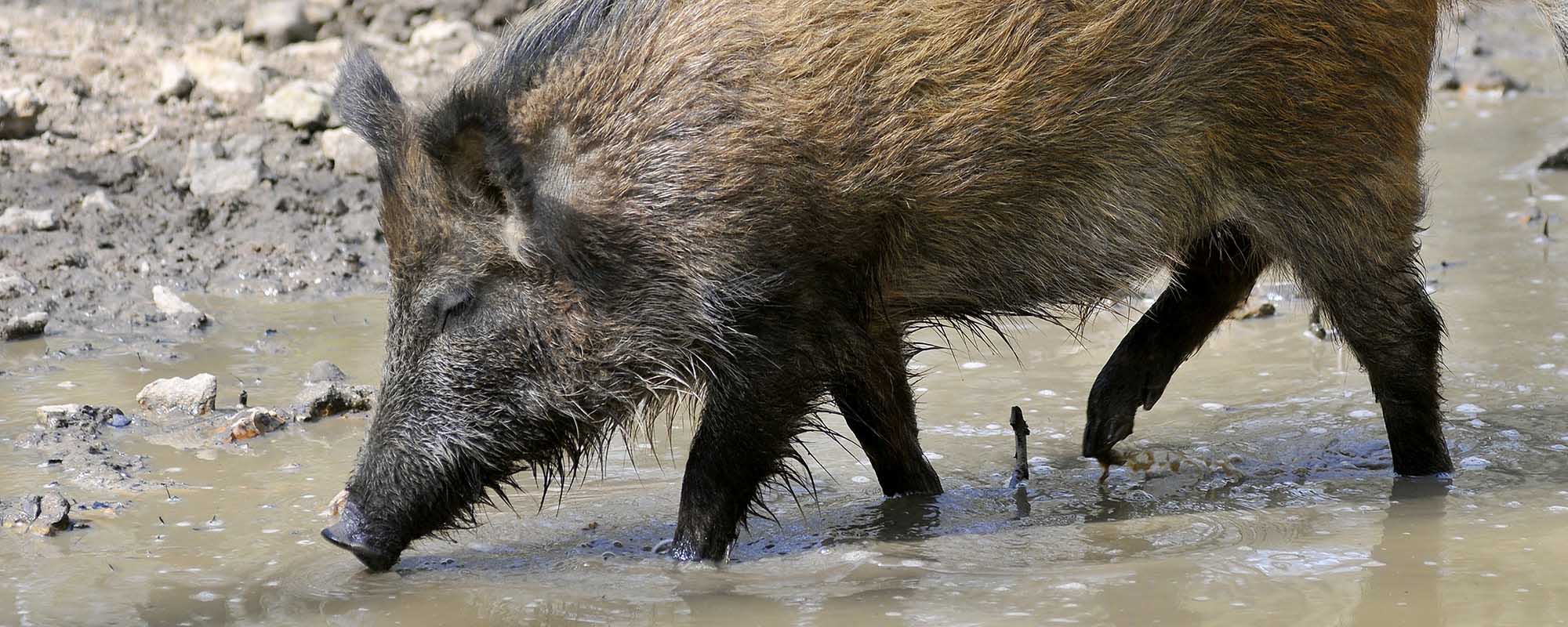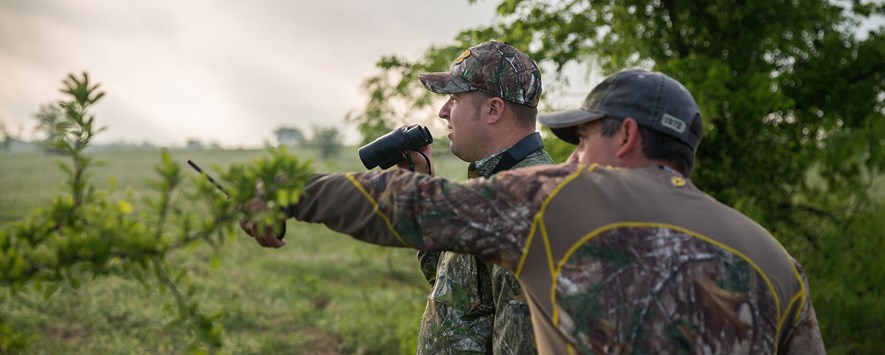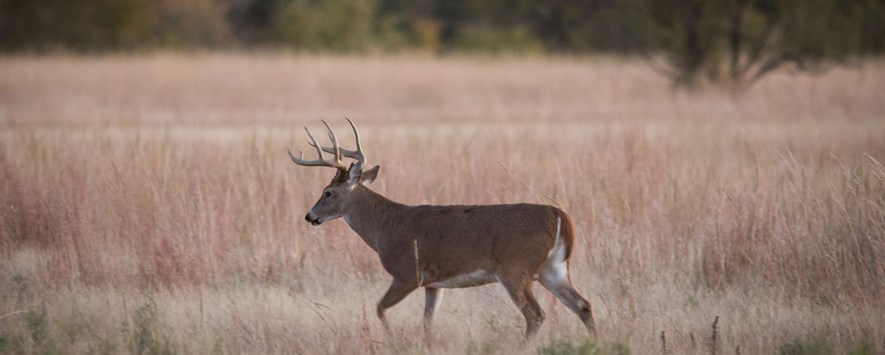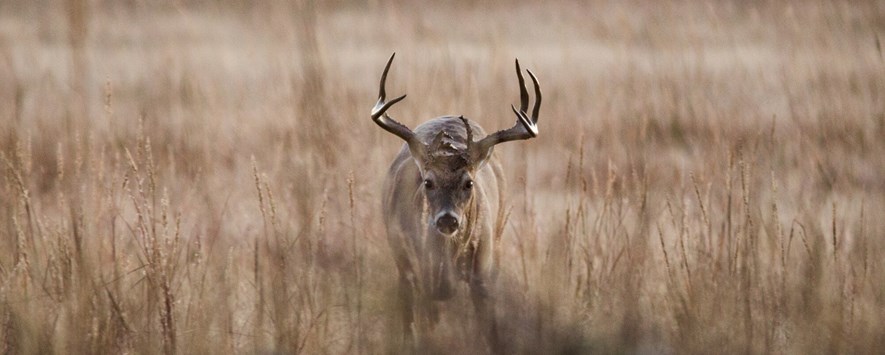The feral hog has received a lot of credit for various depredation and disease problems, but is sometimes wrongly accused. Feral hogs, like all animals, are susceptible to many infectious and parasitic diseases, but probably cause more problems through rooting, wallowing and depredation.
Depredation
Feral hog depredation on crops, livestock and wildlife can be extensive. In one instance, monetary loss in peanut crops damaged by feral hogs exceeded $40,000. In another instance, feral hogs rooted along freshly planted corn rows, consuming the seed and causing a significant loss of money and labor. Seedling corn has been similarly affected.
The most extensive crop damage usually occurs at planting time or when a crop is nearly mature. Of all landowners, farmers are probably most adversely affected and have the most negative opinion of feral hogs, especially those whose property adjoins riparian areas or other properties with feral hog populations. Ranchers seem to have mixed opinions of feral hogs, depending on the amount of damage incurred to forage and stock, and whether or not they lease hunting rights.
 This corn field and several others in the area received thousand of dollars of damage due to hogs. Financial impact to crops can be extensive.
This corn field and several others in the area received thousand of dollars of damage due to hogs. Financial impact to crops can be extensive.
Being omnivorous, feral hogs can become predatory when the opportunity arises. Calves, kids, lambs, fawns, ground-nesting birds, reptiles and amphibians have been consumed by feral hogs. Hogs generally prey only upon young livestock, especially kids and lambs, but will take adult animals when the rare opportunity presents itself. When livestock depredation occurs, hogs are usually the last to receive blame because most people do not think of a hog as a predator. Hogs also carry off or thoroughly consume young prey leaving little, if any, evidence of the cause or source of livestock losses. Feral hogs are probably more scavenger than predator, so when evidence of livestock appears in the scat, it is difficult to determine whether a hog killed the livestock or simply fed on a carcass. There have been documented accounts of hog depredation on quail and turkey nests, but overall hog impact on quail nesting success is relatively minor. Some results indicate a higher incidence of nest damage in bottomlands due to the feral hogs' preference for this habitat.
Disease and Parasites
Feral hogs may carry or transmit many diseases to humans and livestock such as pseudorabies, swine brucellosis, tuberculosis, tick-fever, rabies, anthrax and tularemia. The two diseases of feral hogs that are of most concern are pseudorabies and swine brucellosis.
Pseudorabies is a viral disease of the central nervous system that can affect domestic and feral hogs, and fatally affect cattle, horses, goats, sheep, dogs and cats. Wild animals such as raccoon, skunk, opossum and small rodents can also be fatally infected. Symptoms of the virus in these animals are anorexia, excessive salivation, spasms, convulsions and intense itching followed by paralysis and then death. Pseudorabies is not related to the rabies virus and does not infect people. This disease is of special concern to domestic hog owners because it can weaken pigs and cause abortions and stillbirths, thus decreasing production and profits. Once infected, the hog is a lifetime carrier and will periodically shed the virus through the mouth and nose. Transmission of the disease can be through direct contact, contaminated feed and water, ingestion of infected tissues or contaminated trailers.
Swine brucellosis can cause infertility in feral boars and abortions in feral sows. This disease can also cause a loss of production and profit in domestic swine operations. Swine brucellosis is transmitted to other hogs through reproductive discharges such as semen and afterbirth, and, once infected, a hog is a carrier for life. The only effective way to control this disease is to test and remove infected individuals, which is impossible in a wild population. Swine brucellosis is contagious to humans, through tissues, blood, urine and feces, and symptoms may range from severe flu-like symptoms to arthritis or meningitis. There is no cure for this disease in animals, but humans can be treated with antibiotics.
Main reservoirs of tuberculosis infection are in humans and cattle; however, feral hogs have been found infected with Mycobacterium bovis, the same strain of tuberculosis found in humans and cattle. Although the M. bovis strain has been detected in feral hogs, they are not very susceptible. The infection is most often contracted by ingestion of infected materials. Lesions on the lymph nodes are good indicators of an infected hog. Fortunately, due to extensive control measures, this disease is not common. Feral hogs may also carry another strain of tuberculosis, M. avis, contracted by eating dead birds. This strain is not contagious to humans.
 A heavily used wallow can ruin watering holes for other animals. Areas like this are good places to hunt hogs during hot summer months.
A heavily used wallow can ruin watering holes for other animals. Areas like this are good places to hunt hogs during hot summer months.
Anthrax is a serious soil-borne disease most commonly associated with neutral or alkaline soils that serve as reservoirs for the organism's spores. Recognized endemic areas include portions of Texas, Louisiana, California, Arkansas, Mississippi, Nebraska, South Dakota and small areas in other states. Even within these areas, anthrax occurs irregularly and primarily when the minimal daily temperature is above 60 degrees F. Although uncommon, the feral hog may become infected when feeding. Humans can contract this disease from contaminated animals or soil. The disease in humans is often fatal if not promptly treated with antibiotics.
Tularemia is not commonly found in feral hogs, but they can contract it through direct contact or ingestion of contaminated animal carcasses. Ticks can also transmit tularemia and are the most common source of infection for man. Persons who dress, prepare or eat improperly cooked feral hog or other wild game are also at increased risk.
Feral hogs harbor several parasites, some of which might pose problems for humans or other animals. Fleas, hog lice and ticks are common external parasites that a hog may acquire. Internal parasites can occur in feral hogs and may include roundworms, kidneyworms, lungworms, stomachworms, whipworms, liver flukes and trichinosis. Trichinosis infections in humans can be caused by consumption of undercooked infected pork.
Ranchers, farmers and hunters need to be aware of these potential diseases and take precautions to avoid infection. Livestock owners should ensure that their animals are vaccinated, especially when there is a chance they may have contact with feral hogs. There are state and federal laws governing the transport and relocation of feral hogs. Hunters, trappers, butchers and wildlife managers should always wear rubber gloves or other suitable hand protection when handling or dressing feral hogs. They should avoid contact with reproductive organs and blood, and wash thoroughly after contact. Hunters and chefs preparing feral hog meat should make sure it is thoroughly cooked.





